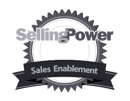
Your Sales Success Depends on Your Decision-Making Context
Every sale, in the end, is a decision. To make more sales, salespeople need to understand how their customers make decisions. In order to understand how they make them, they need to understand the context in which they are making them.
In the 1990s at IBM, Dave Snowden described an approach to decision-making that he called the Cynefin framework. The framework focuses on the environment in which decisions are being made and is named after a Welsh word meaning “habitat.”
When I read about the Cynefin framework, I saw that it is a useful way for us to think about buying decision environments in order to do a better job of making sales.
What is the Cynefin framework?
The Cynefin framework is a decision-making framework that focuses on the context or environment in which decisions are being made. It divides those environments into four quadrants, with a section in the middle called “confusion.”
A clear environment is one in which causes and effects are known and direct. Decision-making in a clear environment is simple and straightforward, because the rules are simple and straightforward. In this environment, you simply follow the rules to get what you want.
A complicated environment also has clear causes and effects, but it may require expertise to fully understand them. In a complicated environment, the rule is to call in the experts.
A complex environment is one in which there are still causes and effects, but there are lots of them, they are less clear, and they are more likely to be interrelated in ways that are impossible to fully understand except in retrospect. In a complex environment, you gather as much information as you can, examine it all, use your intelligence and expertise, and make the best decision you can, knowing that you won’t understand the full implications until after the fact. Here, the rule is: Be smart, know as much as you can, do the best you can.
A chaotic environment is characterized by lack of clarity and too little information, with no sense of cause and effect. In a chaotic environment, the creator argued, any decision is better than no decision, and the first rule is to create order so you can begin to understand enough to make better decisions.
In the middle portion, “confusion,” you have a situation in which no one is quite clear on what kind of environment they’re in, and different stakeholders are operating from different assumptions about their environment. Here you may have someone wanting everyone to play by the rules, while someone else feels the most important thing is to take decisive action even if it breaks the rules, while another person may want to slow down and analyze the situation in the expectation that a complex solution may be called for. Nothing gets done in “confusion,” and no one can be effective. Too often, that unfortunate limbo is where salespeople get stuck.
How to Use The Cynefin Framework to Make More Sales
Sales professionals can help customers better when everyone is on the same page about which decision-making context they’re in. Thinking about the Cynefin framework in a sales context, the types of environments break down like this:
Clear: A simple transactional sale, such as purchasing a low-price item online is an example of a clear sales environment. The buyer wants a thing, they find it, they like the item, they like the price, they buy it. The rules are clear, and the cause and effect is direct.
In a clear sales environment, the salesperson’s main job is to follow the rules, do the required number of activities, and answer questions. Scripts may be used, and it is easy to automate. These sales jobs are being replaced by computers.
Complicated: A large government contract can provide an example of a complicated sales environment. For instance, in a government RFP for geological survey services, there are clear rules, causes, and effects. However, correctly providing the right information to win the deal requires a team of experts who understand the requirements and know how to present them in the way that the government agency needs them to make the decision.
In a complicated sales environment, the salesperson’s job is to understand which experts and what analysis is required and to connect the expertise and analysis with the right buyer stakeholders to help them make their decision. As a side note, it helps to understand who wrote the requirements list, why they wrote it the way they did, and who helped them with it...
Complex: Conveniently, a complex sale as I define it is also an example of a complex environment. In a complex sale, there are many causes and many effects, and they all interact with one another in ways that can be impossible to fully understand at all times. There may be many stakeholders, some known and some unknown, with many competing priorities and perspectives, and it’s unclear how all the different aspects of the deal may impact other aspects.
In a complex sales environment, salespeople must be highly skilled and willing to take informed chances. They must be able to connect with multiple stakeholders, understand many moving pieces from the buyers' points of view, and help the buyers make sense of the information in order to get their needs met.
Chaotic: New markets are often distinguished by chaos. No one quite knows who will buy what, when, or why. The generative AI market is an example of a chaotic market right now, where no one is quite sure which applications will take off and which will fall to the side.
In a chaotic sales environment, the most aggressive and decisive person or brand often wins, though it is a mark of chaos that you can’t predict who will come out on top. There are no rules, so these companies must be willing to take bigger chances and make up the rules as they go.
Confusion: Confusion reigns when one or more parties to the sale believe themselves to be in one environment, when actually they’re in another. For instance, buyers of complex solutions sometimes think that they’re operating in a clear environment, where they can check off boxes and make an easy, informed, straightforward choice.
In this environment, the salesperson’s job is to help the buyer slow down and take the time to make a good decision for them and their company.
Often, no matter what environment the salesperson is operating in, their first task is to bring the customer on board and orient them to the correct environment. A buyer who thinks a purchase is clear when it’s actually quite complex will make major mistakes. A buyer who thinks the purchasing environment is chaotic when actually it’s simply complicated will need help organizing their priorities and understanding how to navigate their choices effectively.
Salespeople can help customers better when everyone is on the same page about which decision-making context they’re in
The biggest problems arise when the salesperson doesn’t understand their environment. If they think the sale is clear and the customer sees it as complex, they won’t be able to win their trust – or the deal. Likewise, if they think it’s complicated and all they have to do is show all the details and information, the customer will likely go somewhere else.
Do your salespeople know what type of environment they’re operating in? And do they know how to get their customers into the same quadrant so they can help them make decisions?

By George Brontén
George is the founder & CEO of Membrain, the Sales Enablement CRM that makes it easy to execute your sales strategy. A life-long entrepreneur with 20 years of experience in the software space and a passion for sales and marketing. With the life motto "Don't settle for mainstream", he is always looking for new ways to achieve improved business results using innovative software, skills, and processes. George is also the author of the book Stop Killing Deals and the host of the Stop Killing Deals webinar and podcast series.
Find out more about George Brontén on LinkedIn








